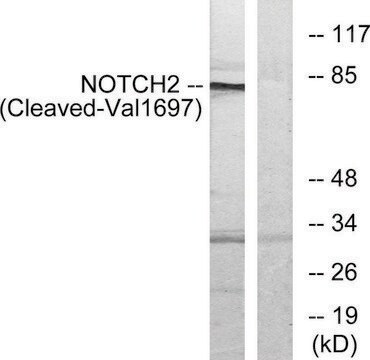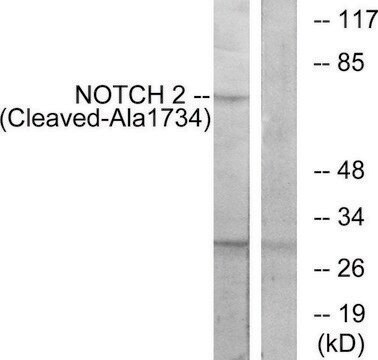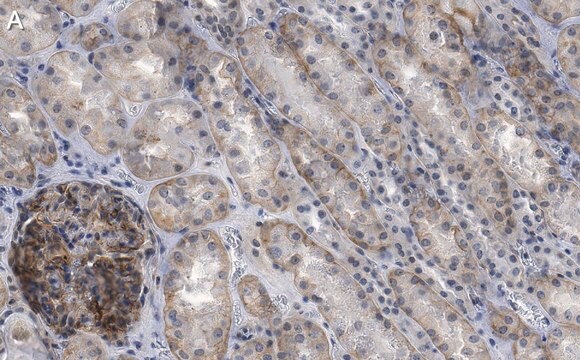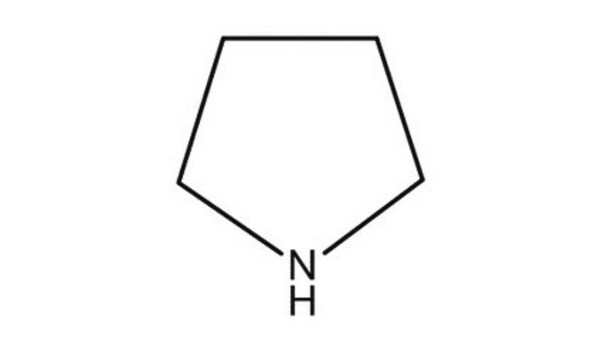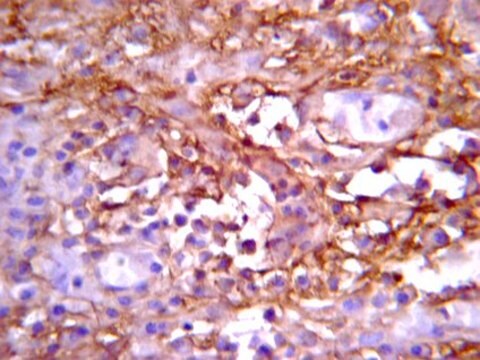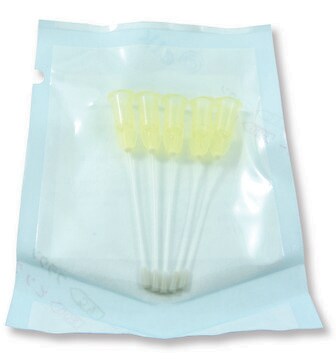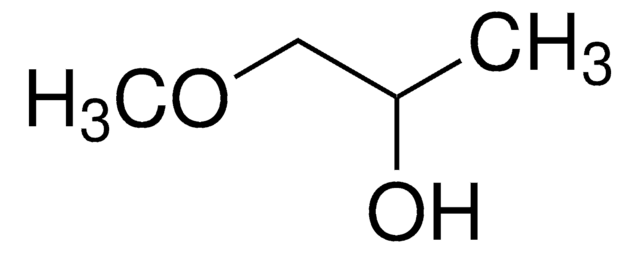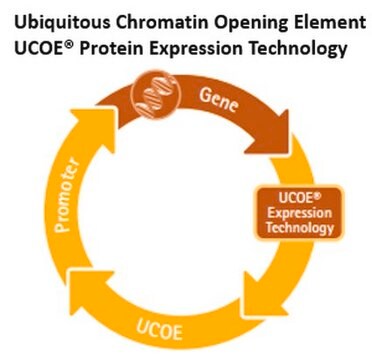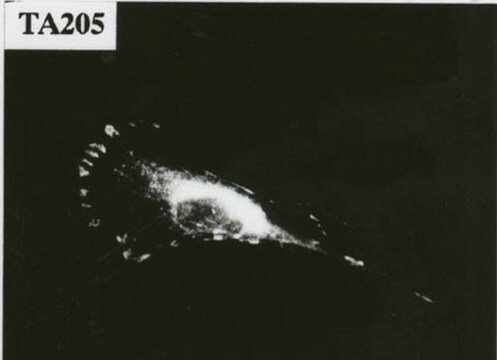07-1234
Anti-Notch 2 Antibody, NT
serum, from rabbit
Sinónimos:
Neurogenic locus notch homolog protein 2 precursor, Notch (Drosophila) homolog, Notch 2, Notch homolog 2 (Drosophila)
About This Item
Productos recomendados
origen biológico
rabbit
Nivel de calidad
forma del anticuerpo
serum
tipo de anticuerpo
primary antibodies
clon
polyclonal
reactividad de especies
mouse, human
reactividad de especies (predicha por homología)
rat (14/15 immuongen sequence homology)
técnicas
ELISA: suitable
immunohistochemistry: suitable (paraffin)
western blot: suitable
isotipo
IgG
Nº de acceso NCBI
Nº de acceso UniProt
Condiciones de envío
wet ice
Información sobre el gen
human ... NOTCH2(4853)
Descripción general
Especificidad
Inmunógeno
Aplicación
1:30,000-1:90,000 dilution from a previous lot was used in a standard sandwich ELISA assay against the peptide immunogen.
Optimal working dilutions must be determined by the end user.
Immunohistochemistry(paraffin):
Representative testing from a previous lot.
Optimal Staining of NOTCH-2 Polyclonal Antibody: Squamous Cell Carcinoma
Epigenetics & Nuclear Function
Transcription Factors
Calidad
Western Blot Analysis: 1:500 dilution of this lot detected cleaved NOTCH2 on 10 μg of NIH/3T3 lysates.
Descripción de destino
Ligadura / enlace
Forma física
Almacenamiento y estabilidad
Handling Recommendations: Upon first thaw, and prior to removing the cap, centrifuge the vial and gently mix the solution. Aliquot into microcentrifuge tubes and store at -20°C. Avoid repeated freeze/thaw cycles, which may damage IgG and affect product performance.
Nota de análisis
NIH/3T3 Cell Lysate
Cláusula de descargo de responsabilidad
¿No encuentra el producto adecuado?
Pruebe nuestro Herramienta de selección de productos.
Opcional
Código de clase de almacenamiento
12 - Non Combustible Liquids
Clase de riesgo para el agua (WGK)
WGK 2
Punto de inflamabilidad (°F)
Not applicable
Punto de inflamabilidad (°C)
Not applicable
Certificados de análisis (COA)
Busque Certificados de análisis (COA) introduciendo el número de lote del producto. Los números de lote se encuentran en la etiqueta del producto después de las palabras «Lot» o «Batch»
¿Ya tiene este producto?
Encuentre la documentación para los productos que ha comprado recientemente en la Biblioteca de documentos.
Nuestro equipo de científicos tiene experiencia en todas las áreas de investigación: Ciencias de la vida, Ciencia de los materiales, Síntesis química, Cromatografía, Analítica y muchas otras.
Póngase en contacto con el Servicio técnico